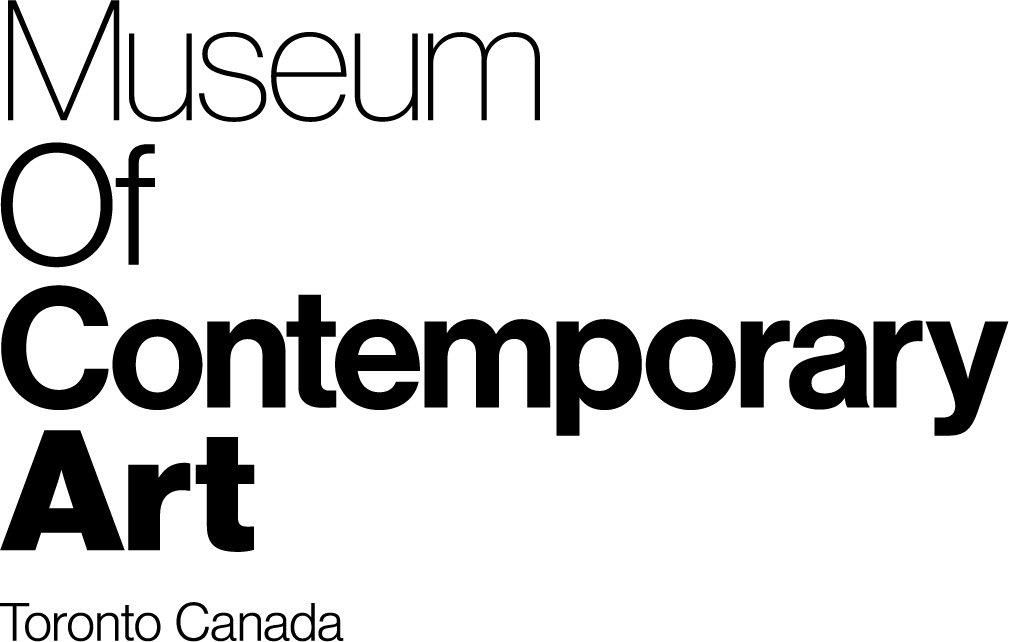Mission: Art for Our Sake
MOCA is motivated by our belief that museums can be culturally and socially useful. We promote exceptional artistic thinking and provide a community space for discourse and creativity.
Working across all contemporary art forms, we empower the local Toronto art scene, while informing the international. MOCA is an accessible, welcoming hub rooted and engaged in a culturally rich neighbourhood; it is here, through art, that you can feel the specialness of this invigorating and hyper-diverse city.
MOCA Toronto’s Commitment to Equity, Diversity, Inclusion and Justice
In the spring/summer of 2020, we told you that we were reviewing what MOCA can do better to actively dismantle systemic racism in the Museum and focus on care across all that we do.
In the intervening months, we have begun the steady process of taking up this work. MOCA’s Equity Committee (a staff-led initiative with Board representation) convened in July 2020 and have been meeting on a regular basis to develop recommendations and training initiatives. MOCA has committed budget resources to the work of the committee, and internal training on Indigenous cultural competency, anti-racism and anti-oppressive practice was initiated in January 2021 with full staff and Board participation.
In January of 2021, MOCA commenced a 5-year strategic planning project and we are currently in the research and discovery phase of planning. The interrelated pandemics of COVID19 and systemic racism are the lens through which we plan our path forward, and we will continue to share outcomes and next-steps as our mission and vision evolves.
We continue to reflect on the diversity of our exhibitions and public programmes. In particular we are aware of the need to include more voices in the selection and commissioning of the artists and artworks shown in MOCA’s spaces. These are areas we are actively developing, and hope that our coming programming, networks, partners and approaches will speak to our commitment to effect change.
History
In September 2018, MOCA moved into a 55,000 square foot purpose-designed home in a former industrial space at the heart of a new neighbourhood in the Lower Junction.
MOCA (formerly known as the Museum of Contemporary Canadian Art – MOCCA) has been celebrated for its incisive, artist-centric approach to programming, and hospitable visitor experience.
At its former location on Queen West, the museum functioned as a hub for creative exchange and played a critical role in shaping the city’s contemporary art scene. Through a commitment to collaborative partnerships with leading like-minded artists, organizations, institutions and festivals from Toronto and further afield, MOCA connected the city to a national and global network of peers.
MOCA featured the work of over 1,100 Canadian and other international artists, hosted 200+ exhibitions and welcomed 40,000 annual visitors. As the lease on Queen West wound down, the need to move provided an opportunity to seek a larger space that could accommodate the museum’s ever-growing aspirations and significance.
Annual Reports
Auto BLDG
Built in 1919, this building, designed by architect John W. Woodman of Winnipeg, was once the tallest in Toronto. Active until 2006, it was originally a factory that produced aluminium products for World War II, and later made items such as kitchen tools, bottle caps and car parts.
When it opened a hundred years ago, this building was considered innovative because it did not use beams for support. Instead, it pioneered a new approach called concrete flat slab architecture. Each floor is a slab of reinforced concrete and is supported by concrete columns – the “mushrooms” you see on each floor, which distribute the weight to the floor below.
Once an example of innovation, and now a heritage building, today it houses the most innovative ideas and art. How cool is that?

